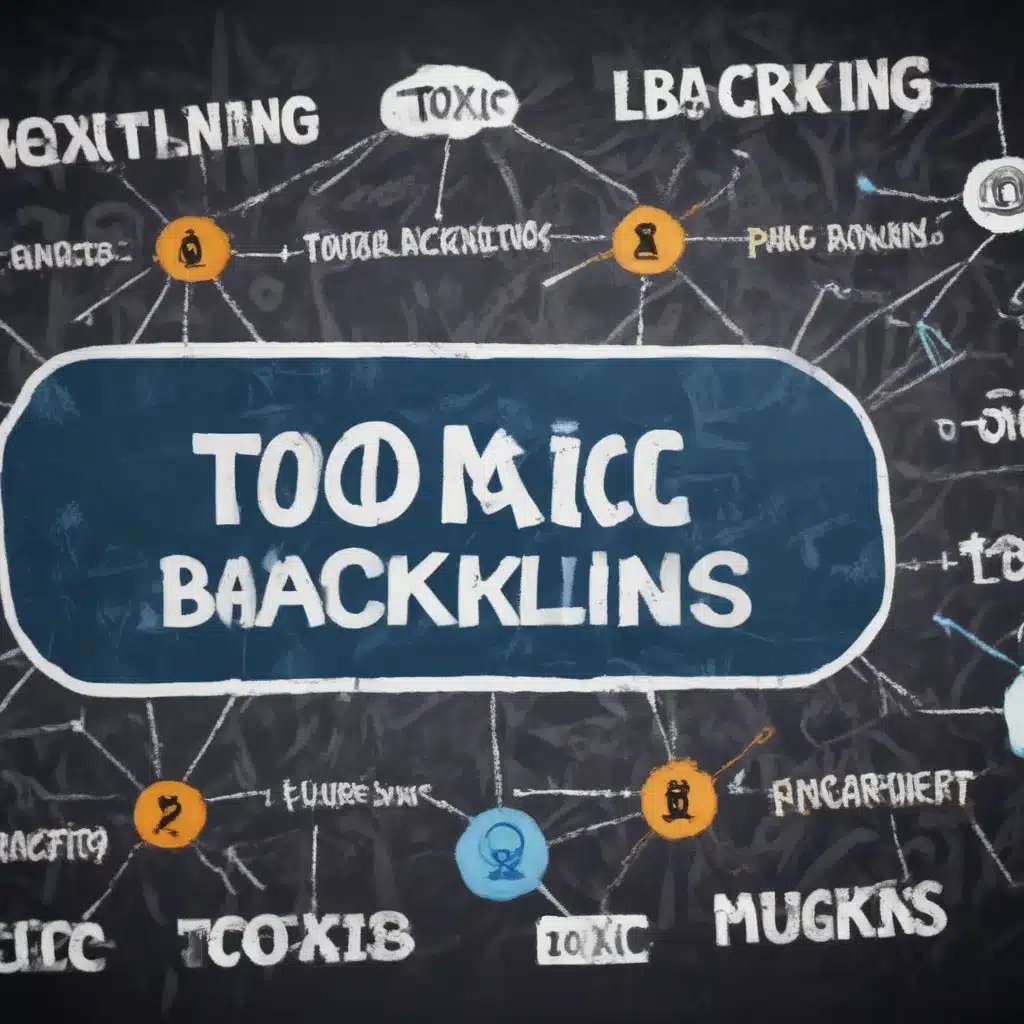
Identifying and Plugging Toxic Backlinks
The Nightmare of Toxic Backlinks
I still remember the day when my world came crashing down. It was a beautiful Monday morning, and I was feeling optimistic about the week ahead. Little did I know that my website’s hard-earned rankings were about to take a nosedive, all thanks to a horde of toxic backlinks.
It all started when I noticed a significant drop in organic traffic to my site. At first, I brushed it off, thinking it was just a temporary glitch. But as the days went by, the numbers kept plummeting, and I knew I had to take action. That’s when I decided to dive deep into my backlink profile, and what I found was nothing short of terrifying.
Toxic backlinks, the walking dead of the SEO world, had swarmed my website, threatening to bite, scratch, and eat my rankings alive. These were links from spammy domains, private blog networks, and low-quality online directories – the kind of backlinks that Google despises with a passion.
I had spent countless hours and dollars on my SEO link-building campaigns, only to end up with a fistful of bad backlinks and the deafening silence of high-authority domains that had once been my allies. It was a nightmare come true, and I knew I had to do something about it before my website was completely obliterated.
Identifying Toxic Backlinks: A Thorough Approach
The first step in tackling this issue was to identify the toxic backlinks that were dragging down my website’s performance. I turned to SEOptimer’s Backlink Research tool, a comprehensive solution that consolidates all the key information about my backlink profile.
As I plugged in my domain, I was greeted with a long list of links pointing to my website. It was time to put on my detective hat and analyze each one. I started by checking if the linking pages ticked these boxes:
- Irrelevant Content: Does the linking page offer little to no value or appear shady?
- Excessive External Links: Is the page cluttered with an unnatural number of outbound links?
- Suspicious Anchor Text: Are the anchor texts using irrelevant or manipulative keywords?
- Low-Quality Domains: Do the linking domains have a poor Domain Authority or Trust Flow?
After a thorough review, I realized that a significant portion of my backlink profile was indeed toxic. There were links from spammy article directories, low-quality web directories, and even some shady private blog networks – the kind of links that I had naively acquired in the past, thinking they would boost my rankings.
Plugging the Toxic Backlinks: A Comprehensive Approach
Now that I had identified the problematic links, it was time to take action. The first step was to manually review each one, using tools like WebCEO’s Toxic Backlink Checker to assess the level of toxicity. This helped me prioritize the most urgent cases and create a plan of attack.
For the links that were truly toxic and beyond salvage, I decided to go the disavow route. I used Link Dtox from Link Research Tools to generate a disavow file, which I then submitted to Google. This essentially told the search engine to ignore those harmful backlinks when evaluating my website’s overall link profile.
But for the links that had some potential value, I took a more proactive approach. I reached out to the webmasters, politely requesting that they either remove the links or, at the very least, update the anchor text to something more relevant and natural. Surprisingly, some of them were receptive to my requests, and I was able to clean up a good portion of my backlink profile this way.
Keeping a Watchful Eye: Ongoing Backlink Monitoring
Of course, the battle against toxic backlinks is never truly over. Just like weeds in a garden, these pesky links have a way of resurfacing, no matter how diligently you try to uproot them. That’s why I’ve set up a regular backlink monitoring system using tools like WebCEO and SEOptimer.
Now, I receive weekly or monthly reports on any changes to my backlink profile, allowing me to stay on top of new toxic links before they can do any real damage. And if I do spot any suspicious activity, I’m quick to take action, reaching out to webmasters or submitting a new disavow file to Google.
It’s a never-ending battle, but I’ve learned that the key to maintaining a healthy, high-performing website is to be vigilant and proactive when it comes to managing your backlink profile. Toxic backlinks may be the walking dead of the SEO world, but with the right tools and strategies, you can keep them at bay and ensure that your website’s rankings remain strong and secure.



























